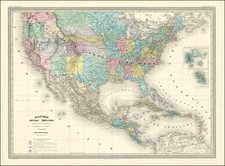Beginning The Route To William Ludlow's Exploration of Yellowstone in 1875
Detailed map of the regions explored by Captain William Ludlow in 1875 in central Montana.
Finely detailed image of the route from Fort Claggett on the Missouri River south toward the Judith Mountains and beyond the Judith Gap, in the summer of 1875.
In addition to showing a day by day accounting of a portion of Ludlow's Route, the map shows"
- Trails to Fort Benton and Fort Shaw, Montana Territory
- Captain E.W. Clift's Route in 1869 (Fort Ellis to Muscleshell River)
- Lieutenant Mullins Route with the 2nd Dragoons to Oregon in 1860
- Captain Constant Williams Route in 1874
Captain William Ludlow
Important early exploration and survey of the route from Carroll, Montana to Yellowstone, undertaken by Captain William Ludlow in 1875. From Carroll and beginning on July 13, 1875, Ludlow surveyed the route to Camp Baker, Fort Ellis, through the Bozeman Pass and up the Yellowstone River to Yellowstone Park. While in the Park, he was allowed to freely explore and produced a map of the Upper Geyser Basin, before returning via Fort Ellis, the South Fork of Deep Creek, down the South Fork of the Musselshell to the forks and then along the Carroll Road to Armelis Creek. The party then explored the Judith Basin, before returning to Caroll in September 1875.
The Survey was included in Ludlow's Report of a Reconnaissance from Carroll, Montana Territory, on the Upper Missouri, to the Yellowstone National Park, and Return, Made in the Summer of 1875. Ludlow's party included frontiersman Charlie Reynolds as hunter and guide. Lt. Robert E. Thompson served as lead topographer and surveyor. Also accompanying the expedition George Bird Grinnell and Edward S. Dana. Grinnell, who afterward as editor of Forest and Stream did much to promote the park, described the zoological and paleontological features of the region, while Dana submitted a worthwhile report on geology.
Ludlow observed the splendors of the park and the general purity of atmosphere which gave objects a "wonderful transparency and distinctness," the "wealth and luxuriance of color almost supernatural" in the Grand Canyon, and the unique geyser basins where nature, "abandoning for the time all thoughts of utility, seems to have been amusing herself in this far-off and long-hidden corner of the world by devoting some of her grandest and most mysterious powers to the production of forms of majesty and beauty such as man may not hope to rival."
Yet nearly everywhere he turned he witnessed men and women chopping and hacking and prying loose nature's irreplaceable handiwork. Around the crater of Old Faithful he saw delicate formations shattered, specimens removed, and everything immovable defaced by the "names of great numbers of the most unimportant persons." Lamenting the havoc worked "by the rude hand of man," he noted: "Miracles of art . . . can be ruined in five minutes by a vandal armed with an axe, and nearly all the craters show signs of [this] hopeless and unrestrained barbarity." In his report Ludlow outlined a plan to save the park: call in the Army, let troops patrol the area, and have the Engineers build roads. Fortunately for the public, these proposals were eventually carried out. In the mid-1880's the Corps began road construction and the Cavalry moved in to protect the park.
William Ludlow (1843 - 1901) was an officer in the Corps of Engineers and a major general in the United States Army who served in the Civil War, Plains Indian Wars, the Spanish-American War, and led a scientific expedition examining the natural wonders of Yellowstone National Park. After the Civil War, Ludlow served in Charleston, South Carolina under Major Q.A. Gilmore until November 14, 1872, when he was reassigned to serve as Chief Engineer of Dakota Territory, where he oversaw mapping and data collection of the 7th Cavalry's 1874 expedition into the Black Hills of what is now South Dakota









![[Early Montana Territory Shown Above Idaho] Johnson's New Military Map of the United States Forts, Military Posts & all the Military Divisions with Enlarged Plans of the Southern Harbors . . . (Shows Military Departments)](https://storage.googleapis.com/raremaps/img/small/93868.jpg)
![[Great Falls, Montana] Great Falls, Montana Size of Lots 50' x 150'](https://storage.googleapis.com/raremaps/img/small/85587.jpg)



![[Montana, Calgary, Edmonton, Saskatchewan] Amer. Sep. No. 32. Partie De La Nouvelle Bretagne](https://storage.googleapis.com/raremaps/img/small/54847.jpg)